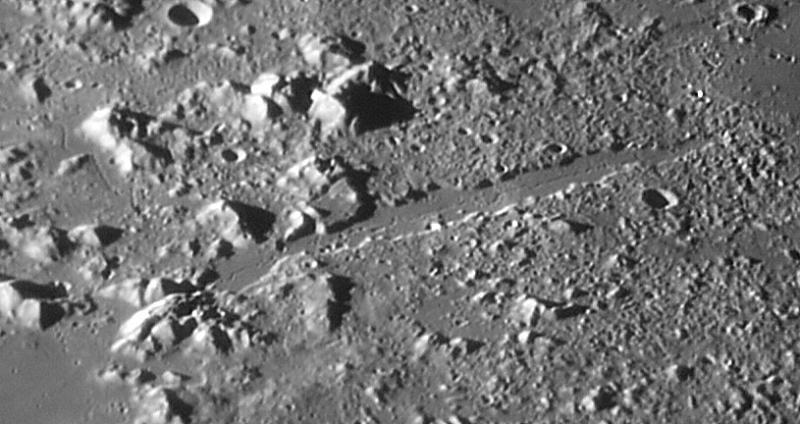Awesome Valley

Explanation:
I am running out of adjectives to describe the excellence of images taken by LPOD contributors. I haven't become jaded: Ho-hum, another brilliant image..., rather, I keep being amazed at seeing feature after feature, better than ever before. Take Stephen Keene's masterful image of the Alpine Valley, for instance. Normally, the small channel running down the Valley is difficult to see or image, but here the rille is far more than merely detected - we can trace the right angle bends and crater chains that show us that we don't fully understand rilles. If this is a sinuous rille, is it just chance that it is nearly exactly in the middle of the Valley, rather than meandering downslope one way or the other? And are the craters along the rille random secondaries or associated with the rille's formation? Notice that similar craters define a portion of the sinuous rille at the top left of the image. A tectonically controlled rille like the Hyginus Rille might have crater blowholes if gas escaped through a controlling fracture, and that might help explain the along-rille craters on the floor of the Alpine Valley. But it seems an unlikely explanation for the top-left sinuous rille. I love it when new images raise (and often answer) new questions!
—
Chuck Wood
Technical Details:
Sept. 5, 2004. The image was taken afocal using a Sony Digital 8 camcorder and a Coulter 13 on a tracking platform.
Related Links:
Lunar Orbiter IV View
Rukl Atlas of the Moon, Sheets 4 & 12
